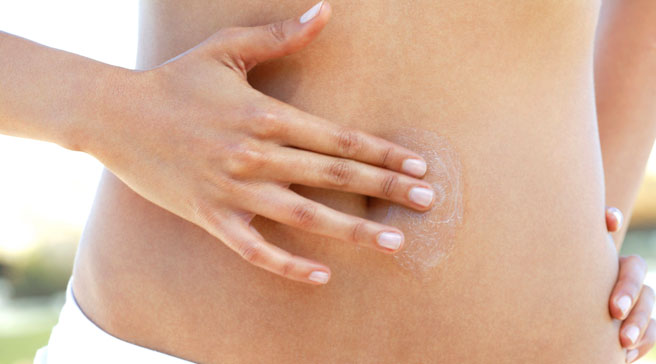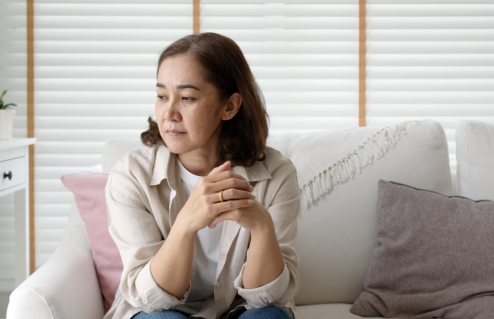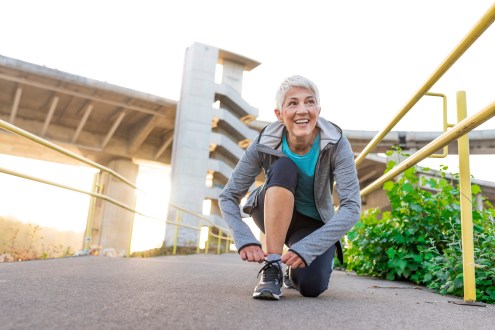The benefits of self-massage
With a few simple techniques you can reap the benefits of a professional massage at home. By Amanda Brown

Genevieve, 33, regularly massages her own back to relieve the pain of scar tissue from a car accident. ‘My lower back gives me intermittent pain, and my osteopath taught me a few massage techniques that give immediate relief,’ she says. ‘I vary them depending on how I’m feeling – getting the right movement and pressure in just the right place is key.’ Although there’s nothing quite like an hour with a skilled masseur, when time or money are short you can still enjoy the benefits – which include pain relief and increased vitality – by practising a few simple techniques at home. And for those who feel self-conscious in spas, or don’t like the idea of being touched by a stranger, self-massage is the answer, enabling you to work in your own home on any sensitive areas. A quick massage is also good after exercise or a long day, giving you a boost and relieving tired muscles without the commitment of an appointment.
How to self-massage at home
• Make sure your room is warm enough and get comfortable – after a bath is a great time for a massage, as your muscles will be relaxed. Warm a little oil in your hands, then apply sweeping strokes, varying according to the effect you want – larger, softer strokes are more relaxing. Slide over the skin using a steady pressure with the entire surface of your hands. If massaging your shoulders, sweep hands over the whole shoulder, encompassing its shape, then gently glide back to where you began, and repeat several times.
• If you have a sore neck and tense shoulders, you can relieve them with a simple reflexology technique, says Susan Harmsworth, founder of spa company ESPA. ‘Massage the base of your big toes to alleviate neck and shoulder pain, then work up to the tip of the toe to soothe the whole head area.’ Or, if you’re sitting at your desk, make fists and knead the base of your neck in a firm rolling motion with your knuckles.
• Massaging your stomach can aid digestion, says Harmsworth. ‘Massage the ascending colon (on the lower right side, by the appendix) in a deep, finger-kneading style, working your way upwards to just below the rib cage in a firm, circular motion. Continue across and then downwards along the opposite side towards the pubic-bone area, and repeat several times.’
• Deep-tissue massage loosens muscle tissue, releases toxins and boosts circulation. Use slow strokes with deep finger pressure over areas of tension, moving along the muscles. Be careful, however, not to damage delicate tissue if you’re recovering from an operation or injury – always reduce pressure if it’s causing any pain. Massaging after exercise can help prevent the build-up of lactic acid in the muscles, which means you’ll feel better the day after, too.
• Massage can help with headaches, says Geraldine Howard, president and co-founder of Aromatherapy Associates. ‘Use two fingers to apply pressure on the bridge of the nose, and around the top of the eye socket, repeating five to 10 times. For sinus pain, work along the cheekbones towards the ears with your fingers to ease congestion.’ To release tension in your jaw, apply a small amount of oil and clench your jaw, then use your index fingers to perform rotary pressure on outer edges.
• Reflexologist Indira Nandha recommends a simple foot massage to relax and balance the emotions. After applying oil, massage the sole of your foot with your knuckles, making a figure of eight that covers the entire foot. Then, starting at the heel, work upwards with just the knuckle of your index finger, using a light circular motion towards the toes, then finish with smaller circles on the pad beneath the big toe. Finally, hold your foot in your palm and massage along the sides, which will help to relieve tension in the spine and legs.
What you'll need
You can massage at home with a little olive oil or a special body oil (see below), or try mixing your own blend by adding two or three drops of essential oil to a base of almond or grapeseed oil. Lavender is particularly good for relaxing, while eucalyptus can help with colds. Rosemary and clary sage are both warming.








